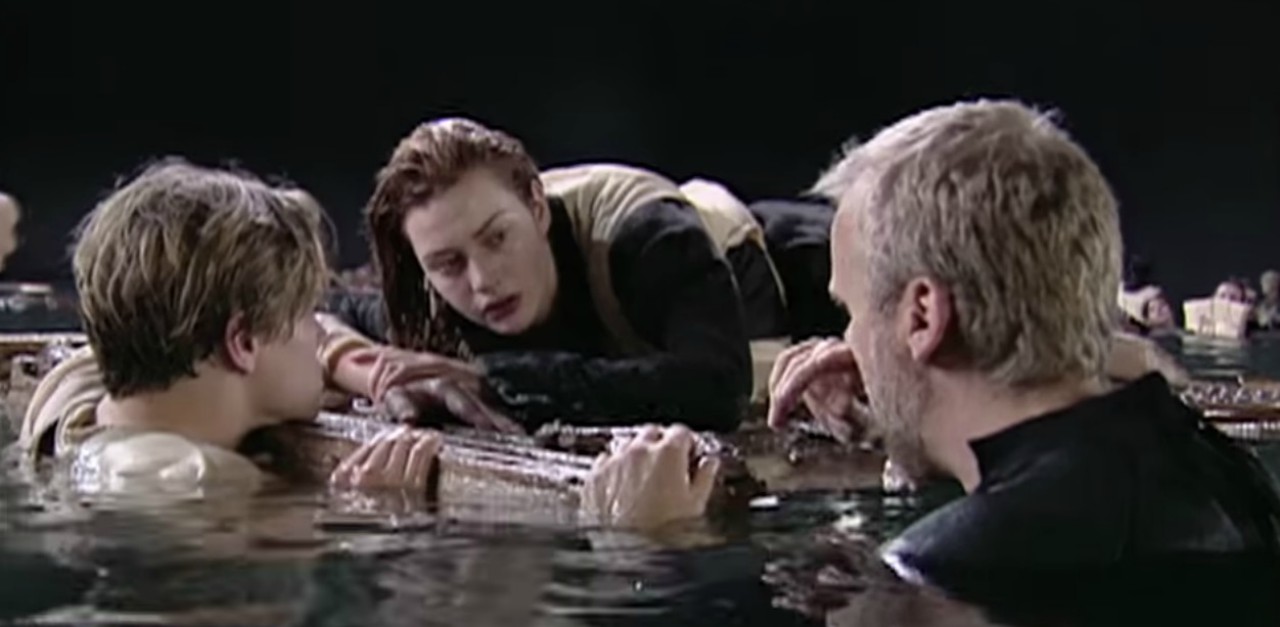
Titanic is undoubtedly one of the most memorable and iconic films in Hollywood history.
The 1997 classic, a fictionalized account of the real-life sinking of the RMS Titanic in 1912, was written, directed, and produced by James Cameron. The movie was a commercial and critical success, remaining the highest-grossing film of all time — until the director's own Avatar surpassed it in 2010.
Despite how beloved the movie is, there's still one controversy that people can't quite get over: Why didn't Rose just scoot over and make room for Jack on the door instead of leaving him in the frigid Atlantic Ocean to die?
Plenty of people have attempted to "prove" that (fictional) Jack easily could have survived the events of the film. Even Mythbusters dedicated an entire episode to proving that it was physically possible for Jack and Rose to have shared a door of that size and lived.
But in an interview with Vanity Fair, the director himself is finally addressing the question of why the doomed lovers didn't just share the door — and his answer is extremely straightforward.
When asked why Rose didn't make room for Jack on the door, James replied that the answer is "very simple" — "because it says on page 147 [of the script] that Jack dies."
James, who finds it "kind of silly" that people are still talking about this 20 years later, explained that it was simply an "artistic choice" that the door was only big enough to safely hold Rose and not Jack.
He continued:
“Had he lived, the ending of the film would have been meaningless… The film is about death and separation; he had to die. So whether it was that, or whether a smokestack fell on him, he was going down. It’s called art: things happen for artistic reasons, not for physics reasons.”
Despite the fact that Jack’s death was for artistic reasons and not physics-related ones, the director also insisted that he was in the water himself testing out the mechanics of the door float.
"I was in the water with the piece of wood, putting people on it for about two days, getting it exactly buoyant enough so that it would support one person with full free-board, meaning that she wasn’t immersed at all in the 28-degree water so that she could survive the three hours it took until the rescue ship got there," he explained.
More from LittleThings: The Original 'Gone With The Wind' Script Reveals Writers Wanted Slavery Shown Differently
On the plus side, James did note that the film achieved its goal — it was "effective in making Jack so endearing to the audience that it hurts them to see him die."
Thumbnail Photo: YouTube / Movieclips Extras
What do you think of this explanation?
Don't forget to SHARE this story on Facebook with fellow Titanic fans!




